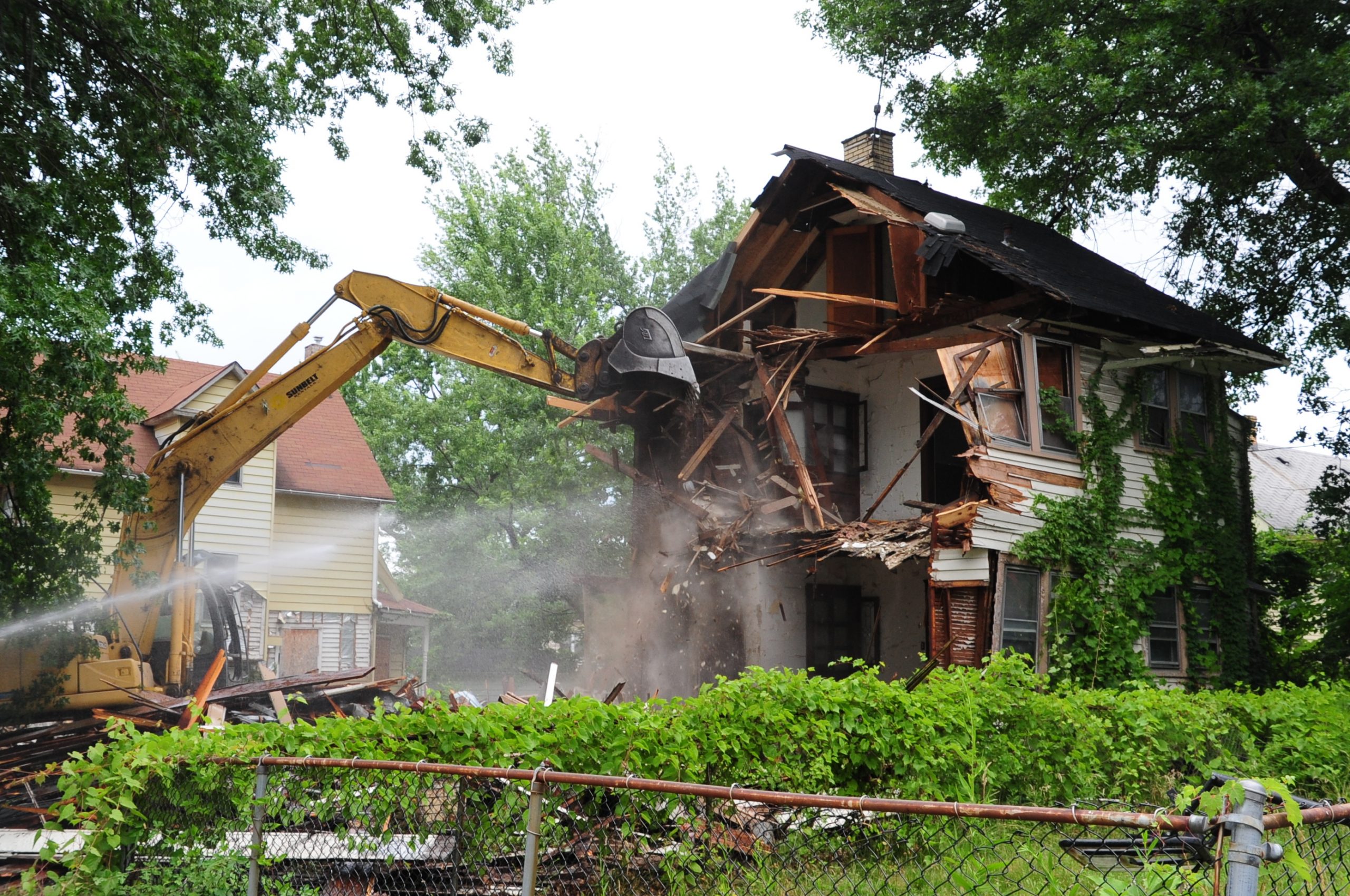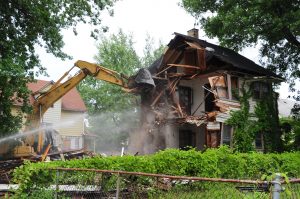Most of the houses in our inventory come into the Cuyahoga Land Bank through the real estate tax foreclosure process. These houses, unfortunately, have sat abandoned for a long time and have developed major system and foundation failures. When a house is beyond the point of rehabilitation or the cost to renovate would be too high, it is scheduled for demolition. The Cuyahoga Land Bank has demolished nearly 9,400 of these problem properties since 2009, clearing the way for new development.
But there’s much more to demolishing a house than just bulldozing the structure. “There is a whole checklist of things that need to be done before, during and after removing a blighted house,” says Deidre Lightning-Whitted, Senior Demolition Inspector for the Cuyahoga Land Bank.
Once a property is deemed unsalvageable, it is slated for demolition. The first step on the way to demolition is removal of solid waste debris from the property. Then, a licensed asbestos surveyor conducts a thorough investigation to identify and quantify asbestos. Smaller asbestos abatement jobs are assigned to qualified, licensed abatement contractors on a rotating basis, but large abatement jobs require a bid offer process. The Land Bank then manages the requisite process of notifying the Ohio Environmental Protection Agency at least 10 days in advance of commencing the asbestos abatement.
“Prior to demolition, we also have to order disconnection of existing utilities – including electricity, water and gas – prepare demo specs and offer bids to qualified demolition contractors.” says Lightning-Whitted. “Finally, our demolition contractors have to obtain multiple municipal permits before demolition may proceed.”
On demo day, there are all types of safety measures taken to protect the crew, the equipment, and any neighboring structures. While the demolition of the house may take only a few hours, the work continues post-demo. There are more inspections, debris removal, a “clean hole” inspection by the municipality, backfilling and a grade approval. Then, the demolition contractor applies topsoil, grass seed and straw.
“We may inspect a site several times to ensure the grass is growing, and we maintain the property – cutting the grass and clearing dumped debris – up until we find a new use for the land or transfer the property to a municipal land bank,” says Lightning-Whitted.


